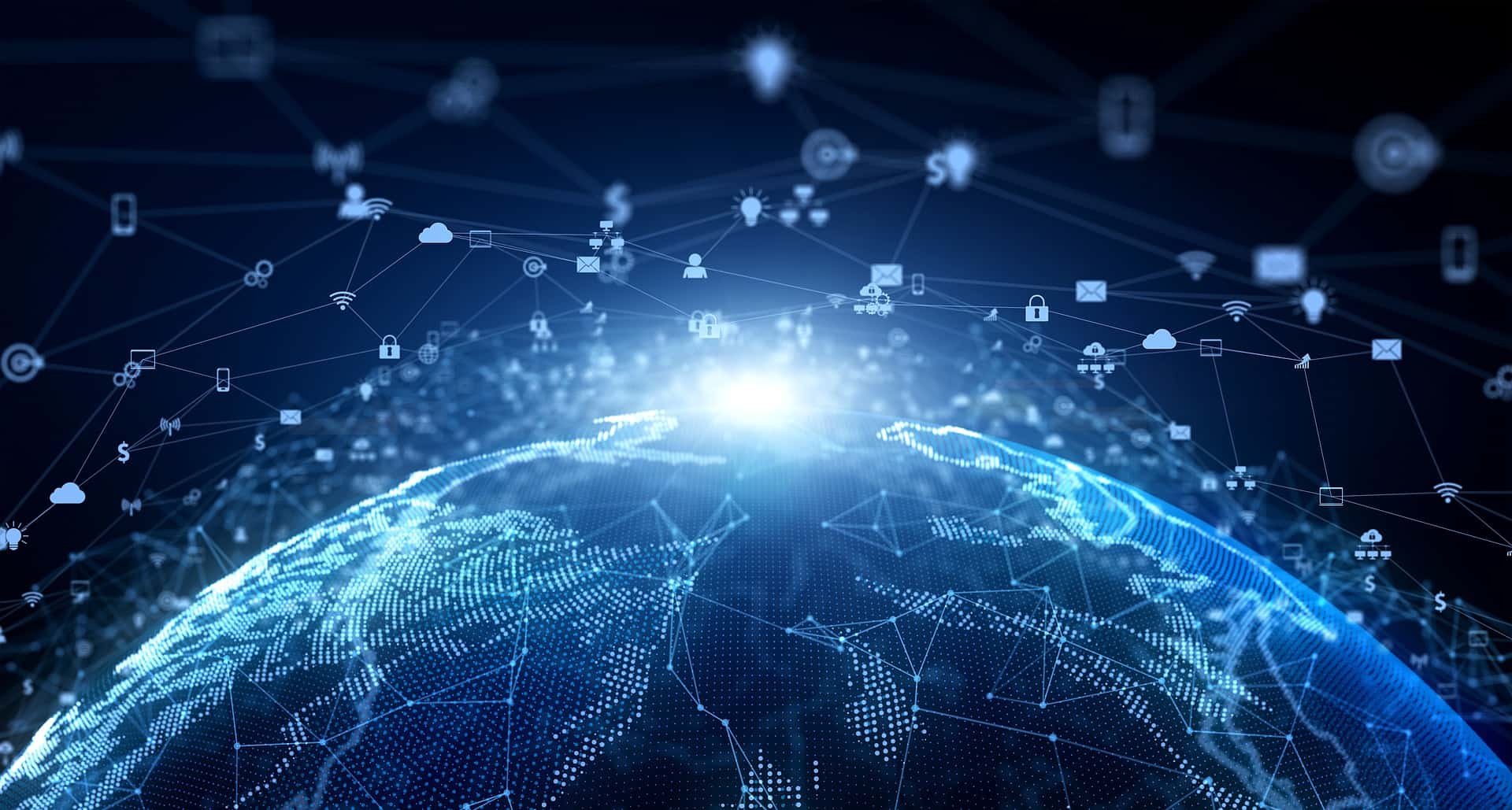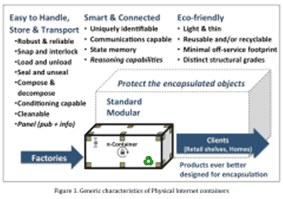Logistics is in full evolution, after the digital acceleration that we are experiencing, great incremental improvements have been seen in the sector. However, there is still a long way to go to eliminate many inefficiencies that continue to create negative economic, environmental, and social impact.

We can see transportation costs continuing to rise, outpacing savings achieved through efficiencies elsewhere in the supply chain. We see how sustainability is the central concern of the logistics transformation, seeking the transport effectiveness, which is known as one of the largest contributors to greenhouse gas emissions.
Physical Internet aims to be the alternative that will transform global logistics to create a universal transport and physical products management network. Its development has the power to tackle and even solve logistical challenges that affect the flow of the sector, such as:
- Transportation underutilization: Transportation capacity in freight cars, trucks, and containers is often underutilized and operated at half capacity. This is largely due to the use of ineffective and non-standardized packaging.
- Empty returns: Transport operators do not take advantage of transport return opportunities. A quarter of all road trip transport is carried out without load.
- Storage and distribution underutilization: They can often be misused or used inefficiently for much of the year due to the seasonality of products and markets.
- The dominance of road transport: Even when we know the great environmental cost. In 2019, it represented 76.3% of freight transport. It is expected to continue growing 3% further until 2025. Operational inefficiencies leave out other more desirable options such as railways. The latter being four times more fuel efficient than trucks, whereby opting for this alternative it would reduce greenhouse gases by 75%.
- Last-Mille Delivery inefficiency : Especially in urban areas. About 40% of the transport costs incurred by a product are incurred in the last mile, and logistics is responsible for 70% of urban traffic. This will only increase.
The previous points represent problem areas, where innovation and technology persecute evolution to solve them. Therefore, new approaches and innovative concepts in logistics and freight transport, such as the Physical Internet, are vital for the transformation that the logistics sector needs.
- The Physical Internet: Interconnected logistics networks, sharing assets and capabilities
What is the Physical Internet (PI or π ) and how does it benefit logistics?
Physical Internet is a development based on the Internet protocol’s philosophy in which the system automatically organizes and performs the packets movement (data and goods) from a sender to a receiver. This allows optimal use of available network capacity without any human intervention.
Its organization is oriented towards multimodal centres (hubs). This means that shipments are routed to the closest hub and then globally and optimally transported to the next hub to ensure efficiency. Using exclusively smart and modular containers for the mobility of physical goods.
The ability to predict through data makes transfers happen automatically, creating much shorter waiting times. The distances between centres are chosen optimizing the balance between transhipment costs and the optimal use of vehicle capacity. This entire system provides shippers and logistics service providers with real-time information about cargo transport and the expected time of arrival.
One of the great advantages of the Physical Internet is that it can reduce transportation time and cost. Delivering significant improvements in the agility, robustness, resilience, and supply chains environmental footprint.
But there are still obstacles that hinder its experimentation and development. One of the biggest problems is the lack of universally adopted tools and processes. To create this globally interconnected network, it must not only be technically feasible and economically profitable, but it must also generate trust and consensus on its design and operation, as well as the opening of logistics companies around the world for its implementation.
- The ALICE European Technology Platform (www.etp-alice.eu) is created to develop a comprehensive logistics and supply chain management strategy for research, innovation, and market deployment in Europe. Focused on creating new concepts where further collaboration and coordination will eventually result in the Physical Internet, where full horizontal and vertical supply chain collaboration takes place.
Digitization and Standardization through π-containers.
To create such a network, the first step is to digitize all available information. Many logistics companies have already done so, or are in the process of doing it, leaving manual processes behind, and relying on data analysis.
The latter is key to success in the Physical Internet, to obtain the information in real-time throughout the process. Real-time data analytics coupled with Digital Twins technology would have the potential to provide relevant cargo and product updates and details. This would make it possible to ensure optimal availability and modes of transport, to generate a fast, reliable, and automatic process.
The basis of the Physical Internet vision is focused on the standardization of physical containers and operations at a globally. Making the container one of the most important factors for standardization: the π-containers development.
π-containers are the solution to standardize and turn the container into a smart object. The goal is, for logistics providers, to be able to transport physical products through a network of connected containers. To be able to move by π-transports, that can be roads, railways, inland waterways, air, etc., depending on the needs and optimization of the load. These π-containers are controlled by distribution centres, between π-nodes, which allow cargo to switch between different vehicles or transport modes.

Source: https://hal-mines-paristech.archives-ouvertes.fr/hal-01487239/document
The purpose of this development is that all operations are handled equally, creating a global logistic process, this being its greatest advantage. Universal protocols and standards would ensure that cargo from different origins around the world can be delivered through and to any other location in a systemic, optimal and controlled manner.
The role of Blockchain, IoT and quantum computing in the Physical Internet
Blockchain and IoT can be a powerful combination for the development of the Physical Internet. Its application, along with the Digital Twins, can help create a more secure, transparent and universal process. Let’s see some advantages:
Continuous supervision and monitoring: Blockchain tracks data transactions between peers within the chain. For all parties connected to the IoT network, blockchain logs can reliably track any anomalies, data leaks/theft, network outages, etc., and act in time.
Security: Smart Contracts allow transparency to carry out secure transactions. Blockchain’s strong encryption standards provide an additional layer to IoT data security, making it harder for threats to be generated.
The combination of blockchain and IoT can bring security and transparency to the entire supply chain to achieve for creating a global connected chain.
This will lead to increased efficiency and value for all parties involved with reduced data duplication, accelerated transaction time, and zero data errors. On the other hand, IoT sensors embedded in trucks, cargo packages, etc., would enable end-to-end visibility and facilitate real-time route optimization and communication between various disparate parts of the supply chain.
Calculation capacity: A global and complex solution such as the Physical Internet needs to be able to process a huge volume of data in real time. This is where Quantum Computing appears as a key element to make this process efficient.
The European goal for 2030 is for the Physical Internet to replace traditional logistics models, creating a standardized and intelligent European network. It is estimated that this will be fully operational by 2040.
Physical Internet will conceptually transpolate data transfer to physical logistics transport procedures. Creating a global network with the power to integrate the entire logistics system, guaranteeing a continuous and universal flow. This is the future of logistics, where all the actions we carry out now will bear fruit in sustainable logistics without barriers.


